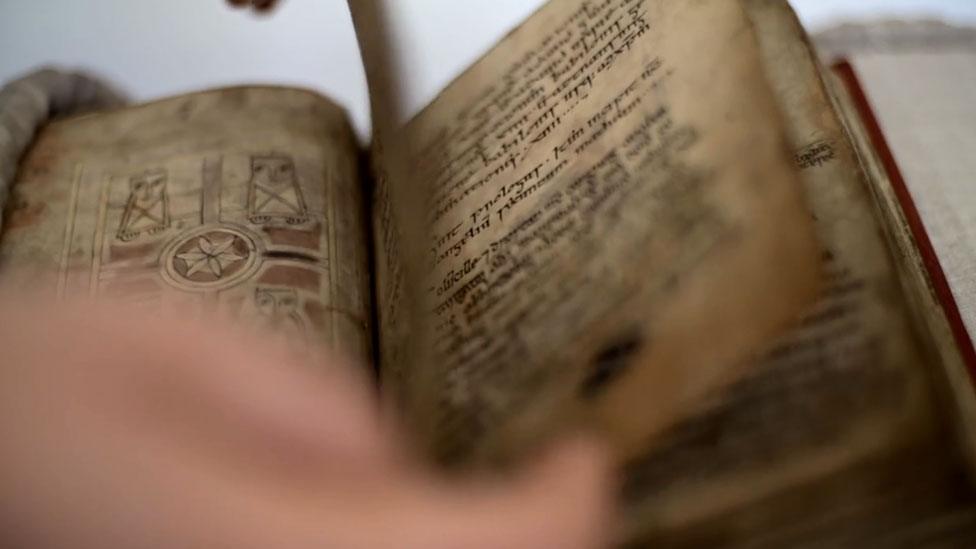Book of Deer: Archaeologists solve oldest manuscript mystery
- Published
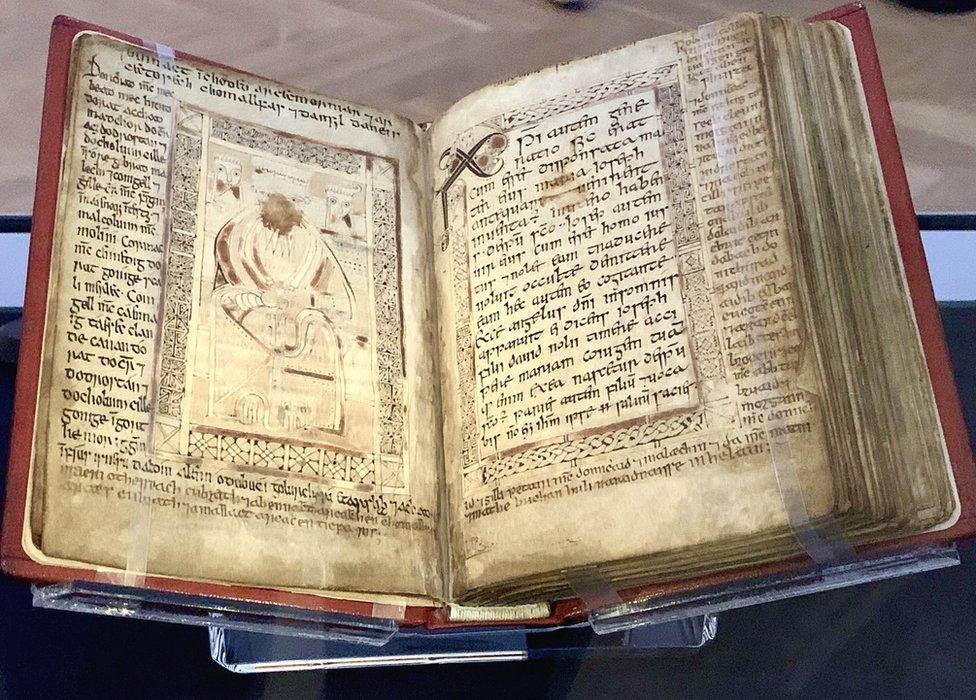
The Book of Deer is thought to be the oldest surviving Scottish manuscript
The monastery where the historic Book of Deer - believed to be the oldest surviving Scottish manuscript - was written has been discovered.
The 10th Century manuscript is noted for containing the country's earliest surviving Gaelic writing.
The exact site of the monastery in Aberdeenshire had remained a mystery.
But samples gathered by archaeologists during a dig, focused on a field near the ruined Deer Abbey, have finally confirmed its location.
The Book of Deer provides an insight into the early church, culture and society of the period, and also features Latin text.

A new dig uncovered evidence of the monastery
The small book is believed to originate from the Monastery of Deer in the Mintlaw area.
It had the celebrated manuscript, external in its care by 1,000AD, before the building fell out of use.
The monks then moved to Deer Abbey after abandoning the monastery.
The book is normally held in the collections of Cambridge University but it went on public display at Aberdeen Art Gallery last year.
Archaeologists and volunteers had painstakingly uncovered artefacts and features which they hoped would lead to the discovery of the site of the monastery finally being identified.
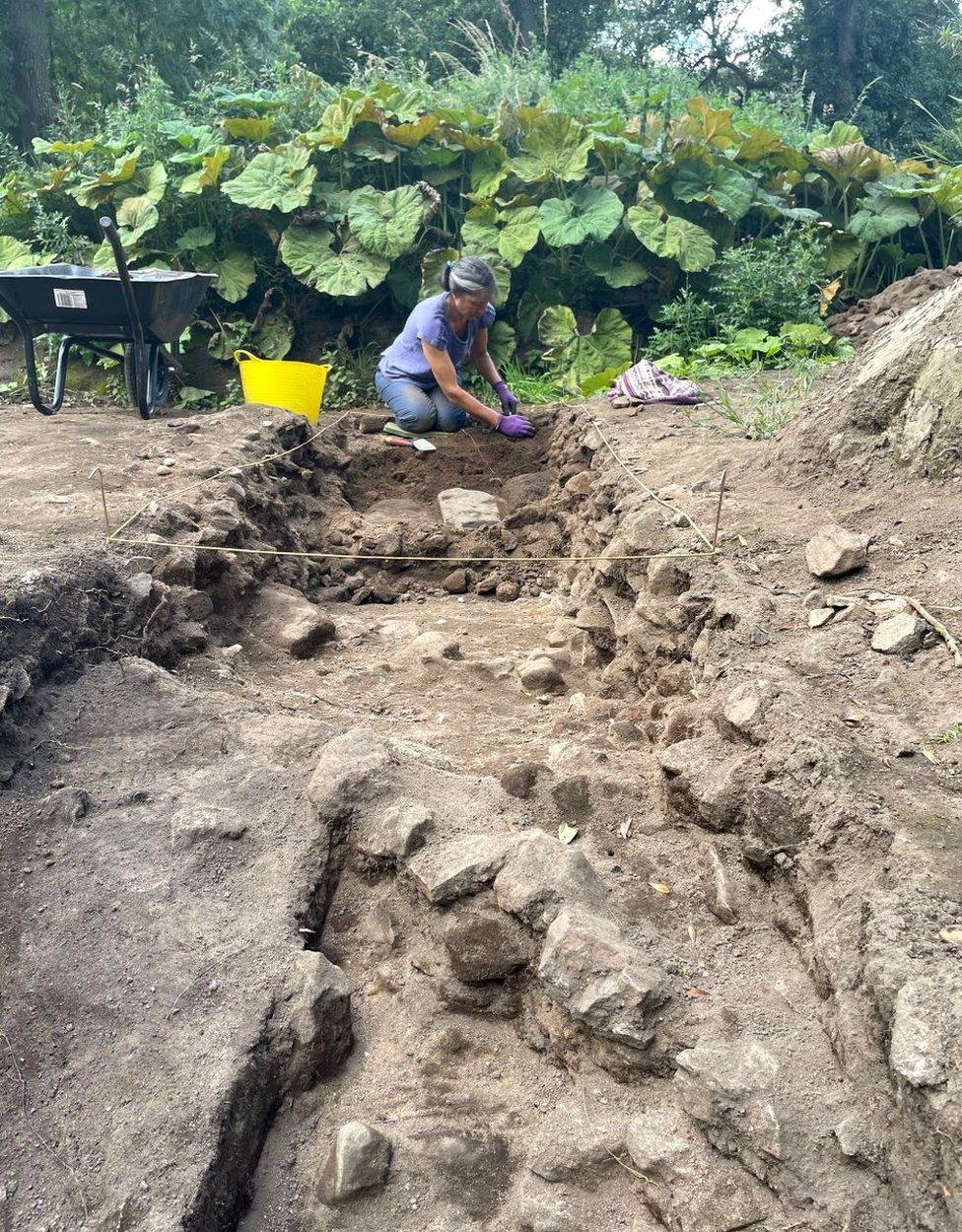
A painstaking dig took place
Lead archaeologist Ali Cameron, from Cameron Archaeology Ltd, explained: "A lot of the rest of the field had been disturbed but we opened such large trenches in 2022 so that we had the best chance of finding early medieval features.
"We spent weeks excavating later material including stone and other demolition material until we got down to the earliest layers and features two weeks before the end of the dig.
"I then led a team of students and volunteers and we systematically cut sections though all the features, collected finds and samples which are important as they are where the charcoal for dating will be."
The samples were carefully processed in the University of Aberdeen, under the supervision of Dr Gordon Noble.
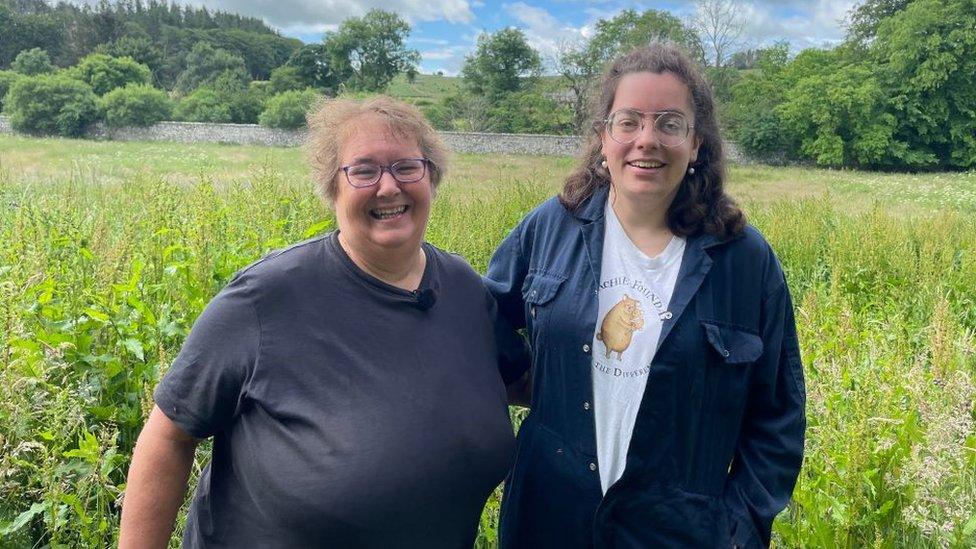
Ali Cameron and Alice Jaspars are delighted at the news
The charcoal was then sent off to the Scottish Universities Environmental Research Centre (SUERC) at East Kilbride.
It took three months to process and the dates were then sent on via email.
"When I opened the email I was stunned and had to re-read them several times before I realised what they were telling me," Ms Cameron said.
Alice Jaspars, an archaeologist and PhD student studying the Book of Deer, was part of the dig team.
She added: "It's almost an unwritten law, but on the last day or the last week of your excavation you'll always find something really cool.
"We had a feeling about it. We had this horrible but exciting sense of anticipation, waiting to see if you have actually found what you think you have found. That painful waiting for the information about the dates is terrible.
"Then Ali, ever so coyly, sent over an email saying - 'I think you should check the dates'. I open it up and it's just unbelievable. We found the monastery."
Produced by Midas Media for BBC ALBA, Làrach Leabhar Dhèir (The Missing Monastery) will be screened at 21:00 on Monday and will also on iPlayer.

Do you have an idea for a story we could cover? Email our local reporters in North East Scotland, Orkney and Shetland: news.aberdeen@bbc.co.uk, external
Related topics
- Published9 July 2022
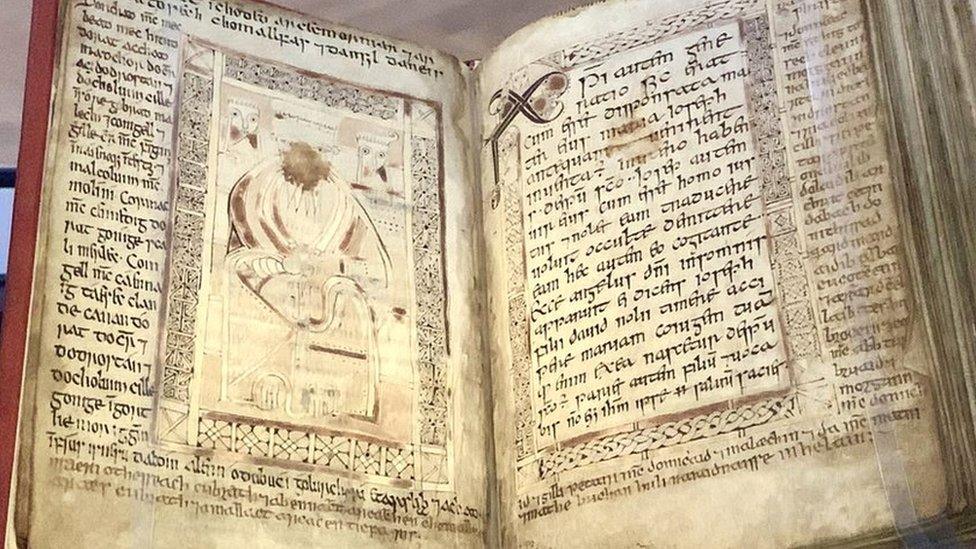
- Published23 November 2021
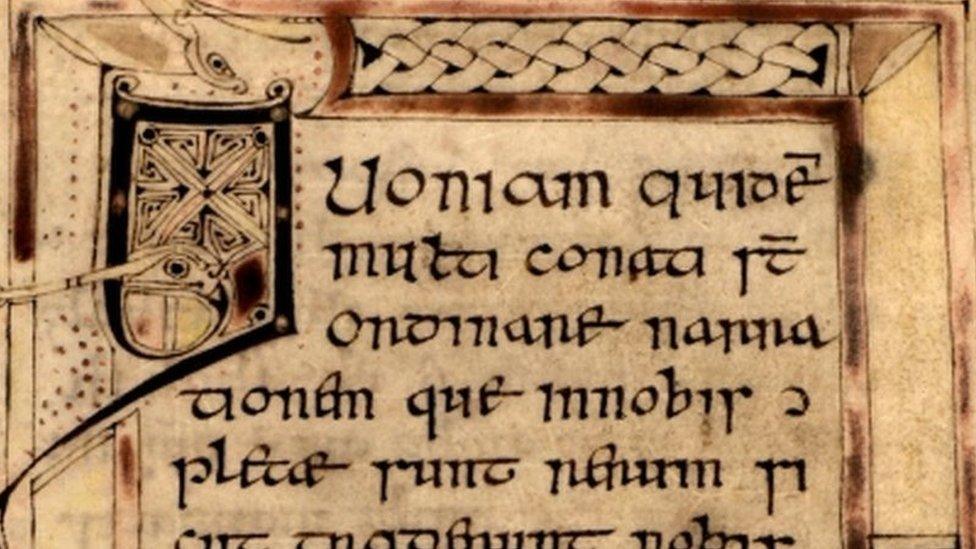
- Published8 January 2018
